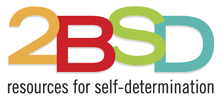Selected Journal Articles
Field, S., Parker, D.L., Sawilowsky, S. & Rolands, L. (2013). Assessing the impact of of ADHD coaching services on university students’ learning skills, self-regulation and well-being. Journal of Postsecondary Education and Disability, 26(1), 67-81.
Field, S. & Hoffman, A.S. (2012). Fostering self-determination through building productive relationships in the classroom. Intervention in School and Clinic, (48)1, 6-14.
Parker D., Field, S., Sawilowsky,S. & Rolands, L. (2012). Self-control in postsecondary settings: Students’ perceptions of ADHD college coaching. Journal of Attention Disorders, DOI:10.1177/1087054711427561.
Parker, D., Field Hoffman, S. Sawilowksy, S. & Rolands, L. (2011). An examination of the effects of ADHD coaching on university students’ executive functioning. Journal of Postsecondary Education and Disability, 24(2), 115-132.
Field, S. & Hoffman, A. (2007). Self-determination in secondary transition assessment. Assessment for Effective Intervention, 32 (3), 181-190.
Field, S., Shaw, S. & Sarver, M. (2004). Strategies to promote academic success and self-determination for college students with disabilities. Remedial and Special Education, 24, (6), 339-349.
Wehmeyer, M., Field, S., Doren, B., Jones, B. & Mason, C. (2004). Self-determination and student involvement: Standards-based reform, access to the general curriculum and CEC’s performance-based standards. Exceptional Children, 69 (2),413-425.
Mason, C., Field, S., & Sawilowsky, S. (2004). Implementation of self-determination activities and student participation in IEPs: Practices and attitudes of educators. Exceptional Children, 69 (2), 441-451.
Kohler, P. & Field, S. (2003).Transition focused education: Foundation for the future. Journal of Special Education,37(3), 174-183.
Field, S. & Hoffman, A. (2002). Preparing youth to exercise self-determination: quality indicators of school environments that promote the acquisition of knowledge, skills and beliefs related to self-determination. Journal of Disability Policy Studies, 13, 113-118.
Field, S. & Hoffman, A. (January, 2002). Lessons learned from implementing the Steps to Self-Determination curriculum. Remedial and Special Education 23,(2), 90-98.
Field, S. (1999). Personal, family, and community strategies to enhance consumer-direction and self-determination: A youth perspective. National Leadership Summit on Self-determination and Consumer-direction and Control: Invited Papers. Portland, Oregon: Oregon Health Sciences University.
Field, S. & Hoffman, A. (1999). The importance of family involvement for promoting self-determination in adolescents with autism and other developmental disabilities. Focus on Autism, 14(1), 36-41.
Field, S., Martin, J., Miller, R., Ward, M. & Wehmeyer, M. (1998). Self-determination for persons with disabilities: A position statement of the Division on Career Development and Transition, The Council for Exceptional Children. Career Development for Exceptional Individuals, 21 (2), 113-128.
Field, S. & Hoffman, A. (1998). Self-determination: An essential element of successful transition for youth with emotional and/or behavioral disorders. Reconnecting Youth, 2 (4), 37-40.
Field, S., Hoffman, A. & Posch, M. (1997). Self-determination during adolescence: A developmental perspective. Remedial and Special Education,.8(5), 85-293.
Field, S. (1997). A historical perspective on student involvement in the transition process:Toward a vision of self-determination for all students. Career Development for Exceptional Individuals, 19, 169-176.
Field, S. (1996). Self-determination instructional strategies for youth with learning disabilities. Journal of Learning Disabilities, 29, 40-52.
Clark, G.M., Field, S., Patton, J.R., Brolin, D.E. & Sitlington, P.L. (1994). Life skills instruction: A necessary component for all students with disabilities. Career Development for Exceptional Individuals, 17(2), 125-133.
Hoffman, A. & Field, S. (1995). Promoting self-determination through effective curriculum development. Intervention in School and Clinic,30(3),134-141.
Field, S. & Hoffman, A. (1994). Development of a model for self-determination. Career Development for Exceptional Individuals, 17(2), 159-169.
Field, S., Hoffman, A., St. Peter, S. & Sawilowsky, S. (1992). Effects of disability labels on teachers’ perceptions of students’ self-determination. Perceptual and Motor Skills, 75, 931-934.
Selected Book Chapters
Field, S. (2013). Education. In M.L. Wehmeyer (Ed.), Handbook of Positive Psychology and Disability. Oxford, UK: Oxford University Press.
Wehmeyer, M.L., Field, S., & Thoma, C. (2012). Self-determination in adolescent transition education. In M.L. Wehmeyer & K.A. Webb (Eds.) Handbook of Adolescent Transition for Youth with Disabilities. New York: Routledge.
Field, S. (2009). Self-determination instructional strategies for students with learning disabilities. In G. Blalock & J. Patton (Eds.), Transition directions for youth and adults with learning disabilities 2nd edition. Austin, TX:ProEd.
Field, S. (1996). Self-determination instructional strategies for students with learning disabilities. In G. Blalock & J. Patton (Eds.), Transition directions for youth and adults with learning disabilities. Austin, TX:ProEd.
Field, S. & Hoffman, A. (1996). Promoting self-determination in inclusion and school reform efforts. In D.J. Sands & M.L. Wehmeyer (Eds.) Self-determination across the lifespan. Baltimore: Paul H. Brookes. (Revision for second edition in development)
Field, S. & Hoffman, A. (1996). Increasing the ability of educators to support youth self-determination. In L.E. Powers, G.H.S. Singer & J. Sowers (Eds.), Making our way: Building self-competence among youth with disabilities. Baltimore: Paul H. Brookes.
